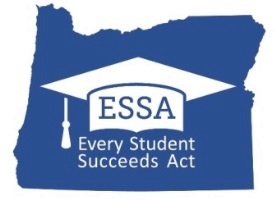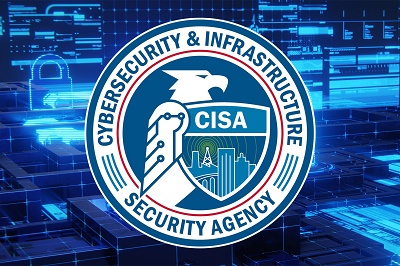Request for Public Comment - Accountability & School Improvement Addendum Proposal
 ODE is requesting and inviting public comment by March 31, 2023 on a select set of small proposed amendments to Oregon’s Every Student Succeeds Act (ESSA) plan. In February 2022, Oregon invited comment and proceeded in applying for a one-year addendum to the plan, with small changes, in order to comply with the Accountability and School Improvement provisions of the law. The proposed amendments would make the changes outlined in the prior addendum permanent and would also address technical changes in the plan to support meeting federal requirements.
ODE is requesting and inviting public comment by March 31, 2023 on a select set of small proposed amendments to Oregon’s Every Student Succeeds Act (ESSA) plan. In February 2022, Oregon invited comment and proceeded in applying for a one-year addendum to the plan, with small changes, in order to comply with the Accountability and School Improvement provisions of the law. The proposed amendments would make the changes outlined in the prior addendum permanent and would also address technical changes in the plan to support meeting federal requirements.
High-level Summary of Select Changes:
- Sustain the revision to the Accountability section to reflect changes to student growth calculations for ELA and Math.
- Revise the accountability section to reflect changes to English Learner Progress calculations.
- Revise the accountability section to reflect adjustments to years of data used in calculations.
- Revise the definition of “inexperienced educator” to align with definitions used by the Teacher Standards and Practices Commission (TSPC).
- Revise Title III monitoring cycles.
- Extend the long-term goals from 2024-25 to 2026-27.
The proposed changes to Oregon’s ESSA Plan can be viewed online and shows markup (tracked changes) as required by the federal government.
Public comment is welcomed and required ahead of ODE submitting the amended plan to the federal government.To submit comments by March 31, please use this survey. We encourage school leaders to share the opportunity for public comment, including educators and local community and education partners, in order to ensure a broad representation in responses. Additional details follow.
Background:
The Elementary and Secondary Education Act (ESEA) was reauthorized as the Every Student Succeeds Act (ESSA) in December of 2015. ESSA required states to develop comprehensive plans to address various aspects of the law. The law provided states more discretion with how these requirements would be met and set the expectation that state education agencies would engage and consult with Tribal and education leaders, educators and school staff, parents, families, students and communities and community partners, to inform and shape the plan.
After considerable consultation and engagement, Oregon’s plan was submitted to and approved by the U.S. Department of Education in August 2017. A confluence of factors over the last few years spurred a need to review the approved plan and make several small, technical changes to ensure compliance with the law.
ODE previously shared these changes in a meeting of Oregon’s Government-to-Government Tribal Education Cluster in keeping with an ongoing obligation to each of the nine nations in Oregon.
More information pertaining to Oregon’s Plan under the Every Student Succeeds Act can be found on ODE’s website.
Please
email us with any questions or comments pertaining to the amendment process.
Oregon Statewide Educator Survey- Deadline EXTENDED

We want to hear from you!
In an effort to allow Oregon educators more time to participate in the Oregon Statewide Educator Survey, the deadline has been extended to Friday, March 24th. This extension will allow educators additional time to share their experience and provide essential feedback that will be used to help inform local and state school improvements.
For more information about the survey, please visit the EAC website.
Oregon CIS Free and Open Access for All

Oregon Career Information System (CIS) is excited to announce an expansion of our partnership with the Oregon Department of Education (ODE) to Free and Open Access for All!
The Oregon CIS is the state’s official career information delivery system – providing occupational and educational data and materials to help Oregonians learn about the world of work and education. We work with schools, colleges, social agencies and businesses who provide career guidance and employee development services.
In Free and Open Access for All, ODE is using Elementary and Secondary School Emergency Relief (ESSER) funds to cover the cost of all of Oregon CIS for the 2022-23 and 2023-24 school year. Additionally, supplemental funds from Every Day Matters will provide the standard implementation access for educators and specialists, as well as access to career exploration tools for elementary students. This truly expands access to Oregon CIS for all Oregonians!
What does this mean for you?
You, your students/clients, and your staff can now access Oregon CIS for your education and professional planning!
You have two ways to implement Oregon CIS:
-
Open Access – Here you can direct your students/clients to use the Open Access version of Oregon CIS. This option does not require affiliation to a school or organization to access Oregon CIS resources. Find the Open Access profiles through the options
on the Oregon CIS homepage.
-
Standard Access – In this option, Oregon CIS will set up your own school’s/organization’s access so that you can set up access for your students/clients and staff. This will allow you and your staff to see your students’/clients’ work in Oregon CIS.
Please contact us to set up your school’s/organization’s free version of Oregon CIS.
Free training is also available thanks to funding from ODE.
Sign up to discover how you can use Oregon CIS.
What does this mean for the state?
All Oregonians, elementary through adulthood will have access to Oregon CIS, a comprehensive career exploration and planning system. This will allow people to research and document their career planning in a systematic way at any point in their career path.
This is an exciting and significant change for the state. Stay tuned as we release additional information and access throughout the coming months.
Please feel free to share this information with your colleagues at other schools/organizations that may not use Oregon CIS.
CISA Helps Schools to Strengthen Cybersecurity Efforts
 The Cybersecurity and Infrastructure Security Agency (CISA) is offering free support to school districts to help them build, operate, and maintain resilient cybersecurity programs.
The Cybersecurity and Infrastructure Security Agency (CISA) is offering free support to school districts to help them build, operate, and maintain resilient cybersecurity programs.
Please read CISA Region 10, Regional Director Patrick Massey’s offer to school districts (below), review the
CISA cybersecurity toolkit and
contact CISA to learn more.
By: Patrick Massey, CISA Region 10 Regional Director
The relationship Americans have with the schools their children attend has changed dramatically over the last few years. Now, parents and students alike are interacting with schools and teachers online in a variety of new ways.
From online grading and information on class assignments, to instructor communication, paying lunch balances, and scheduling classes, we have never been more electronically connected to our schools.
While these advances have brought about great conveniences and made education more accessible and effective, malicious cyber actors are hard at work trying to exploit vulnerabilities in these systems, threatening our nation’s ability to educate our children.
The Cybersecurity and Infrastructure Security Agency (CISA) has developed resources to help K-12 schools and school districts address its cybersecurity risk. We also offer simple steps school leaders can take to strengthen their cybersecurity efforts and fight this growing threat.
Schools and districts are particularly vulnerable to cyberattacks and are an especially lucrative and vulnerable target given the presence of sensitive student and staff data. Impacts from cyberattacks have ranged from restricted access to networks and data, delayed exams, canceled school days, and unauthorized access to personal information.
CISA recognizes that many K-12 entities don’t often have the resources needed to defend themselves from cyber threats, like ransomware attacks. They are what we refer to as “target rich and cyber poor.”
To address these issues, CISA provides three recommendations to help K-12 leaders build, operate, and maintain resilient cybersecurity programs:
- Invest in the most impactful security measures and build toward a mature cybersecurity plan.
See: Cross-Sector Cybersecurity Performance Goals | CISA
- Recognize and actively address resource constraints.
- Focus on collaboration and information-sharing. Consider joining
the Multi-State Information Sharing and Analysis Center: MS-ISAC
Additionally, CISA recently released a report, “Partnership to Safeguard K-12 Organizations from Cybersecurity Threats,” with an accompanying
toolkit to give schools targeted resources to improve their cybersecurity.
The report provides recommendations and resources to help K-12 schools and school districts effectively reduce their cyber risk.
The toolkit aligns resources and materials to each of CISA’s three recommendations along with guidance on how schools can implement each recommendation based on their current need. The toolkit also details free cybersecurity trainings and resources available for the K-12 community.
This report is only a starting point. CISA will continue to engage with federal partners, including the U.S. Department of Education, and work closely with state and local officials, school leaders, and the private sector to identify areas for progress and provide meaningful support that measurably reduces risk.
We hope that leaders in the K-12 community—including superintendents, district and school administrators, school boards, and state policymakers—will take advantage of this report and toolkit to better understand their cyber risks and take basic steps to reduce that risk.
There is no more important institution to the future prosperity and strength of the United States than our nation’s K–12 education system. CISA stands ready to partner with schools to improve your cyber defenses and resiliency.
For more information or assistance, please contact the Northwest regional office for CISA.
Student Spotlight